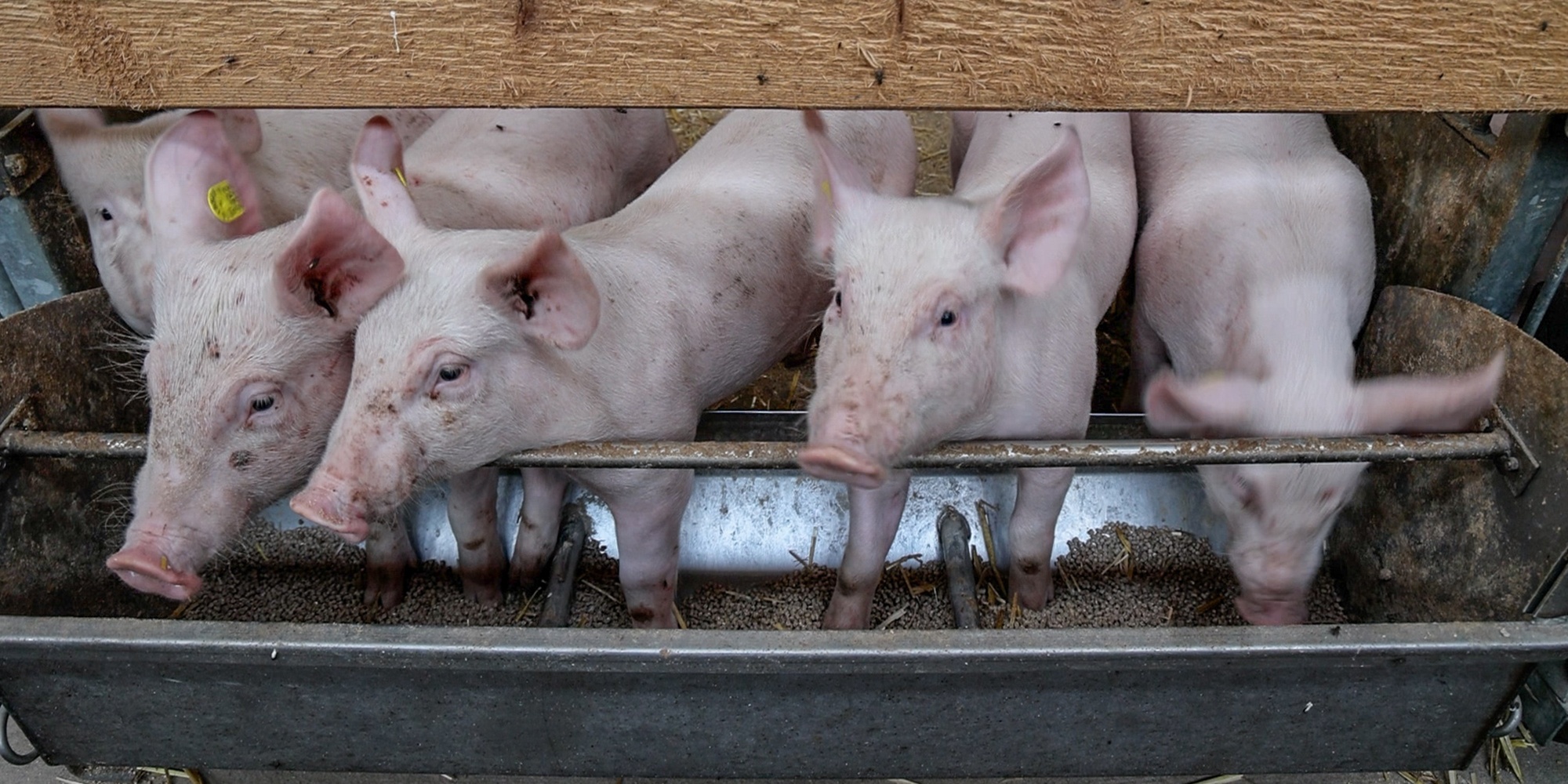Using Former Food Products as Pig Feed Reduces Food Waste
Photo: Johann Marmy,
Agroscope
Food that is unsuitable for human consumption does not affect the growth performance or carcass composition of pigs to which it is fed. This makes it a promising solution for reducing food waste.
Owing to defects, certain foodstuffs are no longer suitable for human consumption. They are, however, edible for animals, and remain useful sources of energy and nutrients such as easily digestible cooked starch, simple sugars and fats. An Agroscope study has shown that such food waste (‘former food products’ or FFPs) can be converted into animal feed, replacing up to 30% of the grain in the diet of growing and finishing pigs with no detrimental effect on growth performance or carcass quality.
In this study, researchers examined the effect of savoury and sweet former food products (FFPs) on the growth performance, feed digestion, body composition and carcass composition of growing-finishing pigs.
Thirty-six Swiss Large White castrated male pigs were assigned to three groups. The first group (ST) was fed a standard grain-based diet. In the second group (SA) and third group (SW), 30% of the ration was replaced by savoury FFPs (pasta, bread and savoury snacks) and sweet FFPs (chocolate, breakfast cereals and cookies), respectively.
Growth performances unchanged when FFPs fed
Feed efficiency in terms of feed conversion ratio was significantly higher in pigs fed a standard diet during the growth period than in pigs fed an alternative diet. If, however, the finishing period is also considered, then body weight, average daily intake, average daily gain (ADG) and feed conversion ratio were similar in the three groups.
Total apparent digestibility of crude energy was higher in the SA group than in the ST group during both growth and finishing. During the finishing period, the total apparent digestibility of crude fibre was higher in the ST group than in the SA and SW groups.
Savoury and sweet FFPs have no impact on carcass quality
Over the entire period, average daily fat intake was significantly higher in pigs fed an SW diet. Despite this, the two alternative diets did not significantly affect parameters associated with the body composition of the pigs. Total carcass fat content was similar between the groups, although the carcass of the SW group had the thickest belly fat.
Fazit
- Replacing up to 30% of pigs’ diets with foodstuffs that are no longer suitable for human consumption (former food products or FFPs) does not have detrimental effects on growth performance during the growth and finishing stages.
- Whilst the total fat content of the carcass was not affected by the feeding of these FFPs, the pigs fed sweet products had thicker belly fat than those fed savoury products.
- Recycling savoury and sweet FFPs in pig feed represents a worthwhile approach to reducing resource wastage and mitigating the environmental impact of food production.
Bibliographical reference
Sugary and salty former food products in pig diets affect energy and nutrient digestibility, feeding behaviour but not the growth performance and carcass composition.



